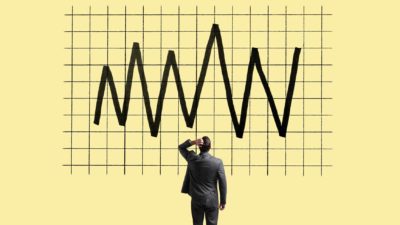Sometimes, I really have to think hard when it comes to choosing something to write about.
Other times the ideas land in my lap. Or, in this case, my inbox.
See, today is one of my favourite days of the year. So much so that I wrote about it, last year.
And apparently made an impression – because my correspondent referenced it in the email I received.
"Happy Vanguard Index Chart Day", she said.
And it's true.
Today is the day the updated Vanguard Index Chart came out.
And it's one of my favourite days each and every year.
Now, don't switch off.
I'm not really that boring, I promise.
Sure, I get a little more excited than most about a simple piece of paper with some squiggly lines on it.
And sure, that's not exactly common.
But I stand by my excitement – and I hope some of it might rub off on you.
First, let's go back a couple of steps.
Each year, fund manager Vanguard releases a one-page chart, showing the performance of different asset classes (cash, property, Australian shares, international shares).
It's a long term chart – going back 30 years.
And it's jam-packed full of really cool information.
No, you're probably still not excited yet. We'll get to that.
It shows the growth of $10,000 invested in each of those asset classes, but lots more, too.
It shows changes of Australian Prime Ministers and US Presidents.
It shows some of the major events that transpired, including recessions, wars and terrorist attacks (unfortunately), the introduction of the GST, the GFC and lots more.
And – you can start getting excited now – it shows the immense power of long term investing.
See, the nightly news will give you the latest daily movements on the ASX.
Occasionally, you might read a story about the returns over the last quarter.
Twice a year or so, you'll get the results over the past calendar or financial year.
And, of course, you'll hear about it any time the market suffers big losses.
But how often do you get those things put into historical context?
How often do you hear about the enormous compounding power of the ASX (and US) stock market, over the long term?
Not that I blame the media, mind you – they're in the news business, not the financial education business.
Thankfully, Vanguard has chosen to do a little education, and that's part of The Motley Fool's core purpose, too.
And that's why I love it when, once a year around this date, Vanguard releases its updated one-page chart.
Not excited yet?
That's okay, I've kept the best for last.
Here goes. According to their data, if you'd invested a hypothetical $10,000 on July 1, 1992, thirty years later, the results would look like this:
Cash: $36,000
Australian Bonds: $56,000
Property: $90,000
International Shares: $94,000
Australian Shares: $131,000
US Shares: $182,000
Now, before we compare them, remember this is from a $10,000 start, assuming no fees or taxes, and with income reinvested.
Lesson 1: Compounding works, regardless of the asset class. Even cash – the worst performer by a long shot – tripled in value
Lesson 2: Shares work, even better. Every dollar invested, 30 years ago, increased 13-fold when invested in Australian shares. You didn't have to do anything.
In fact, you had to do precisely nothing.
Just leave it alone.
Yes, through wars, dot.com, GFC and COVID crashes.
Through fear, uncertainty and doubt.
And through excitement, hype and irrational exuberance.
You didn't have to buy or sell at the right time.
No market timing.
No trading.
No forecasting.
Nothing.
Literally. Nothing.
This is why I invest. It's how I invest.
It's harnessing the power of democratic capitalism, and letting it do its work.
Yes, there was volatility. Yes, there were scary headlines.
There were some bona fide market crashes, too.
And yet…
And yet, $10,000 became $130,000.
$50,000 would have become $650,000
Today's ASX millionaire need have only started with $77,000 in 1992.
Now, imagine 2052, 30 years from now.
There'll be recessions, wars, market slumps, and more scary headlines than you can point a stick at, during the next three decades.
And I can't promise you that the next 30 years will look like the past 30.
But that's also what I would have said in 1992.
Me?
I'm printing out a copy of the updated Vanguard index chart and putting it next to my computer.
I'm giving a copy to my nephews, who currently have last year's version blu-tacked above the stairwell at home.
They get it.
They're on the long-term investing train.
They'll be just fine.
Now it's your turn.
Don't look back in 2052 and wonder what might have been.
Oh, and I've written the best part of 1,000 words.
They say a picture tells it better.
So here it is – I hope it helps you build a wonderful financial future.
And thanks to the people at Vanguard for such a wonderful resource.

Fool on!









